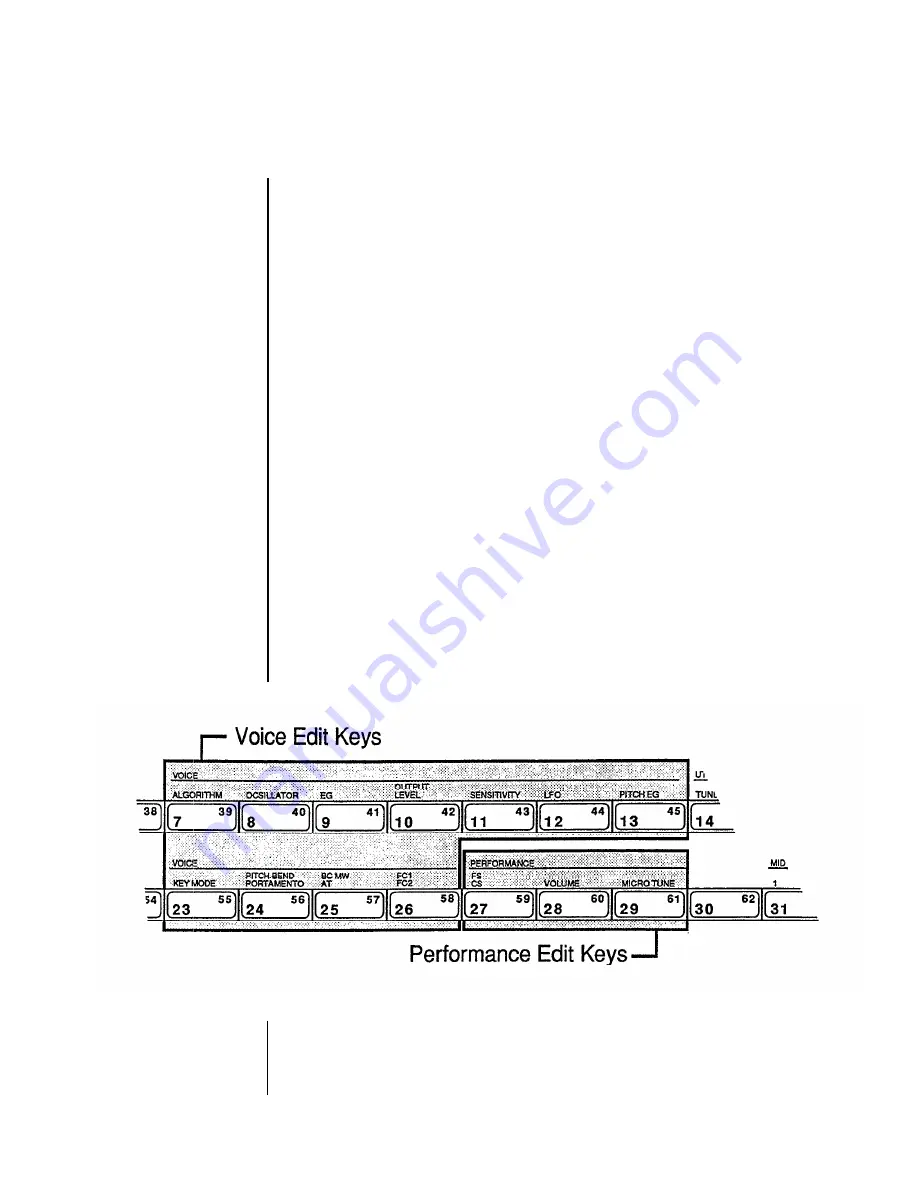
Creating
New Sounds
The Voices and Performance setups in the DX7s are stored as digital information in a
computer-like memory. And, like computer memory, the memory
of
the DX7s can be
altered
for
different uses. In other words, voices do not exist as unchangeable presets (as
they do in electronic organs), but rather as streams
of
data. This data can be changed
(edited) to create new Voice and Performance setups. To find out how this works, read on.
Editing and Edit Mode
Editing is the process of changing various settings of a Voice or Performance memory. In
the DX7s, this is accomplished in Edit Mode. Usually, you will use Edit Mode to create a
new Voice or Performance setup, but you can also use it to find out the parameter values
for the factory preset Voices and Performance setups.
Most of the buttons on the DX’s front panel have multiple functions. You can see this by
looking at the way the buttons are labeled on the front panel. For example, the +1 button
also functions as YES and ON. In most cases, the buttons will have different functions in
different operating modes.
The 32 number buttons are no exception: In the Play Modes, they are used to call up
various Voice and Performance memories; but, in the Edit Modes, they are used to access
the various parameter values that make up a sound.
Normally, when you enter the voice play mode (by pressing the voice button), the
performance parameters will automatically be initialized. If you then go into the
performance play mode (by pressing the performance button) the LCD display will show
you this by displaying “INIT PERF”.
Notice that the number in the LED changes to show which memory number you began
editing. When you switch between a voice parameter and a performance parameter, the
LED will show the corresponding number.
- 21 -
Summary of Contents for DX7s
Page 1: ...YAMAHA DIGITAL PROGRAMMABLE ALGORITHM SYNTHESIZER OWNER S MANUAL ...
Page 7: ...Playing the DX7s 1 ...
Page 25: ...Creating and Storing New Sounds 19 ...
Page 34: ... 28 ...
Page 35: ...Using the New Performance Features 29 ...
Page 38: ...Button 29 LCD Displays 32 ...
Page 45: ...Entering the Micro Tuning Edit Mode Editing Micro Tuning Data Storing Micro Tuning Data 39 ...
Page 46: ... 40 ...
Page 47: ...Using the New Voice Features 41 ...
Page 51: ...Button 10 LCD Displays 45 ...
Page 64: ...Editing Fractional Scaling Data Storing Fractional Scaling Data 58 ...
Page 65: ...Memory Functions 59 ...
Page 68: ...Button 14 LCD Displays 62 ...
Page 69: ... 63 ...
Page 76: ...Formatting a RAM Cartridge Loading Voice Performance Data from a RAM Cartridge 70 ...
Page 77: ...MIDI Functions 71 ...
Page 80: ...Button 32 LCD Displays 74 ...
Page 85: ...Appendices 79 ...
Page 89: ......
Page 90: ...MIDI DATA FORMAT 1 Transmission Requirements Add 1 ...









































